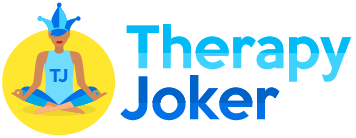
De-Stress for Success: A Practical Guide to Letting Go

Stress. It’s a four-letter word that casts a long shadow over our lives. From looming deadlines at work to juggling family responsibilities, the modern world throws a constant barrage of stressors our way. The weight of these pressures can leave us feeling overwhelmed, anxious, and ultimately, burnt out. But what if we told you there’s a way to not just manage stress, but to truly let it go?
This guide unveils a powerful approach to stress reduction that goes beyond quick fixes and temporary relief. We’ll delve into the root causes of stress, explore the mind-body connection, and equip you with practical tools to cultivate inner peace and lasting calm.
Why We Get Stressed

Instagram | Everyday events can trigger stress due to the gap between expectations and reality.
Have you ever stopped to wonder why seemingly mundane situations can trigger a stress response? The answer lies in the gap between our expectations and reality. We often hold onto ideals about how things “should be” – how others should behave, how situations should unfold, and even how we ourselves should feel. When these ideals clash with the unpredictable nature of life, stress takes hold.
Imagine yourself stuck in rush hour traffic. Your ideal? A smooth, stress-free commute. Reality? Bumper-to-bumper cars and a ticking clock. This disconnect between your ideal and reality triggers the body’s fight-or-flight response, releasing a surge of stress hormones that leave you feeling tense and agitated.
Recognizing the Stress Cycle
The first step to dismantling stress is becoming aware of its presence. Pay attention to your body’s signals. Does your jaw clench when faced with a challenging task? Does your stomach churn before a big presentation? Recognizing these physical manifestations of stress allows you to intervene before they spiral out of control.

Instagram | stockking | To ease stress, start by noticing its signs in your body.
Beyond physical sensations, tune into your inner narrative. What stories are you telling yourself about the situation? Are you labeling yourself as “inadequate” or catastrophizing about potential outcomes? These negative narratives fuel the stress fire, so identifying them is crucial for letting go.
Tools for Tackling and Managing Stress
Now that you understand the source and signs of stress, let’s explore techniques to break free from its grip.
-
Body Awareness:
When stress hits, take a deep breath and focus on your physical sensations. Notice the tightness in your muscles and the shallowness of your breath. By acknowledging these sensations without judgment, you begin to detach from the emotional charge. -
Challenge Your Narratives:
Question the stories your mind creates about stressful situations. Are they realistic? Are they helpful? Often, these narratives are distorted and only serve to exacerbate the stress.

Instagram | prostooleh | Self-care, like a bath, walk, or time with loved ones, boosts energy and resilience against stress.
-
Embrace the Present Moment:
Stress often stems from dwelling on the past or worrying about the future. Practice mindfulness techniques like meditation or mindful breathing to anchor yourself in the present moment. By focusing on the “now,” you release yourself from the grip of what-ifs and could-have-beens. -
Cultivate Gratitude:
Shift your focus from what’s lacking to what’s present. Take a moment each day to appreciate the good things in your life, no matter how small. Gratitude fosters a sense of peace and contentment, making stress less likely to take root. -
Practice Self-Care:
Prioritize activities that nourish your mind, body, and spirit. Whether it’s a relaxing bath, a brisk walk in nature, or spending time with loved ones, self-care replenishes your energy reserves and builds resilience against stress.
Remember, letting go of stress is a journey, not a destination. There will be setbacks, but with consistent practice, these tools will empower you to navigate life’s challenges with greater calm and clarity.
This approach to stress management goes beyond simply coping. By addressing the root causes of stress and cultivating inner peace, you create a foundation for a more fulfilling and joyful life. So, take a deep breath, let go of the struggle, and embrace the power of letting go.
More in Mental Health
-
`
5 Reasons Why Dad’s Side of the Family Misses Out
Family bonds are intricate and multifaceted, often creating a unique tapestry of connections. However, many people notice a peculiar trend: stronger...
July 12, 2024 -
`
A Quick Guide on How to Get Short-Term Disability Approved for Anxiety and Depression
Living with anxiety or depression poses unique challenges, particularly in the workplace, where stress can exacerbate symptoms. For many, short-term disability...
July 5, 2024 -
`
Why Do People Feel Sleepy After Eating?
Is feeling sleepy after eating a sign of diabetes? Well, not directly. There are many reasons why you feel drowsy after...
June 20, 2024 -
`
What Is High-Functioning Depression? Symptoms and Treatment
High-functioning depression may not be a term you hear every day, but it’s a very real and challenging experience for many....
June 13, 2024 -
`
Kelly Clarkson’s Weight Loss Ozempic Journey – Debunking the Rumors
In a refreshing moment of transparency, Kelly Clarkson, the beloved singer and talk show host, sheds light on her remarkable weight...
June 3, 2024 -
`
What Is the Best Milk for Gut Health and Why?
In recent years, the milk section at the grocery store has expanded far beyond the traditional options. While cow’s milk has...
May 30, 2024 -
`
Do Dental Implants Hurt? Here’s All You Need to Know
When you hear “dental implants,” you might wince at the thought of pain. But do dental implants hurt as much as...
May 24, 2024 -
`
5 Key Differences Between A Psych Ward & A Mental Hospital
Curious about the differences between a psych ward and a mental hospital? You are not alone. With the mental health conversation...
May 16, 2024 -
`
It’s Official! “Selling Sunset’s” Christine Quinn & Husband Christian Dumontet Are Parting Ways
Have you ever found yourself unexpectedly engrossed in the personal lives of celebrities, especially when their stories take dramatic turns? Well,...
May 9, 2024










You must be logged in to post a comment Login